#Bill Slavicsek
Text

It's good to be the king. It's better to be a dragon-mage clan lord. (Arnie Swekel pencils and design, and Glen Angus ink, from Council of Wyrms, AD&D 2e boxed set with rules and unique campaign setting for playing dragons as PCs, written by Bill Slavicsek, TSR, 1994)
#D&D#Dungeons & Dragons#Arnie Swekel#Glen Angus#dragon#Council of Wyrms#Bill Slavicsek#dnd#fantasy#fantasy art#gold dragon#dragon hoard#treasure hoard#treasure#half dragon#D&D 2e#AD&D 2e#TSR#Dungeons and Dragons#1990s
159 notes
·
View notes
Text










"I am Grand Admiral Thrawn. I have been away, but now I have returned. I know some of what has occurred. You will fill in the details of the rest when I come aboard. Rejoice, Captain, for the Empire will rise again." Bill Slavicsek, A Grand Admiral Returns (1992)
#the beauty#the sheer absolute beauty!#those eyes! i freaking love his eyes!!!#now i understand why no one felt comfortable with them#btw the first one who dares to lay a finger on the chimaera will answer to me (ง'̀-'́)ง#thrawn#mitth'raw'nuruodo#grand admiral thrawn#lars mikkelsen#isd chimaera#ahsoka#star wars#i love making gifs ^^
351 notes
·
View notes
Text
Have you played TORG ?
By Greg Gorden and Bill Slavicsek
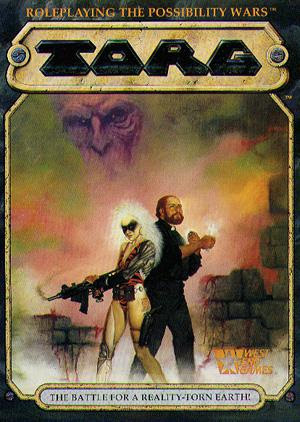
Multiverses have invaded Earth, each imposing their own physical laws on the areas they control and hoping to siphon our Possibilities to become the Torg. PCs play Storm Knights, able to withstand changing realities and fighting the invaders. Cross-genre play with d20s supported by a drama card deck.
21 notes
·
View notes
Text


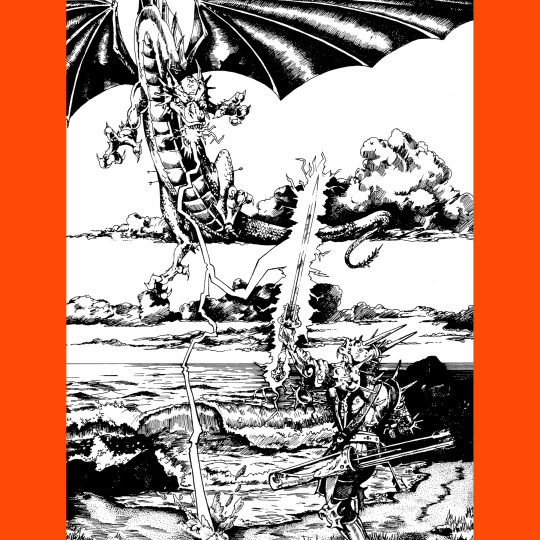

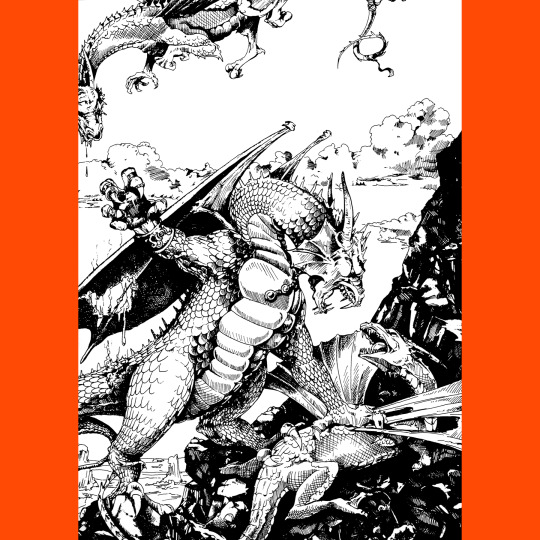
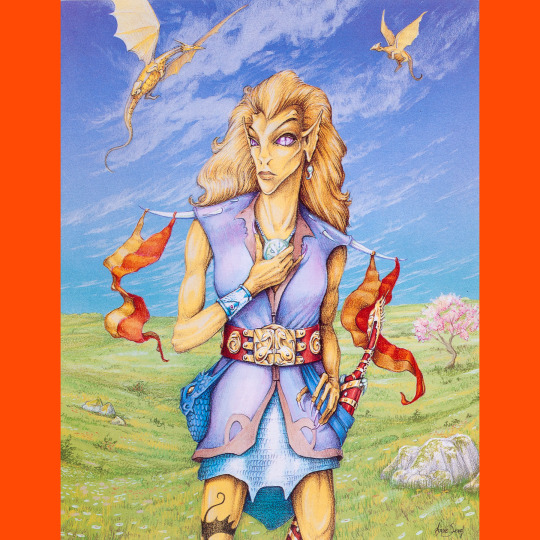
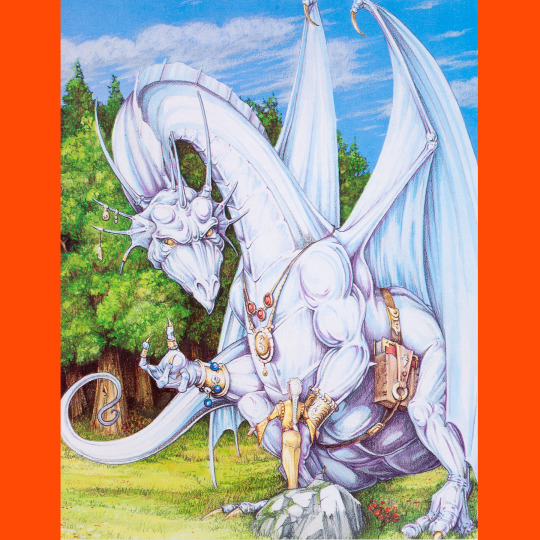

Council of Wyrms (1994) is a D&D campaign setting that ponders the question, “What if dungeons WITH dragons?”
This is a unique campaign setting, a string of islands where dragons of all kinds (metallic, chromatic and gemstone) live apart from the world. In the past, they warred ceaselessly on each other, but recently they have founded a sort of democracy (the titular council, which I can’t help but read as making fun of the 1521 Diet of Worms in some inscrutable way). They did this in order to deal with the incursion of pesky human dragonslayers who were systematically eradicating them (there is also maybe some unintentional metaphor regarding the idea of external enemies being necessary for social stability, but maybe I am reading in too much).
Players take the role of dragons! They can also be half-dragons, or the servitors of dragons, but why would you do that when you can play a dragon? This arrangement reminds me of a sort of summer blockbuster version of Ars Magica for some reason.
Dragons! It really is a mind-boggling thing to realize it took two decades before someone came up with the idea of actually playing the dragons (that someone was Bill Slavicsek, who previously work on the West End Games Star Wars RPG, a fact that brings a lot of context to this project, I think). I have to say, the rules for playing dragons are suitably muscular. I suspect this flavor of D&D is extremely cathartic and freeing. At least for a while. Staying power aside, this is a richly realized box set, which was a surprise when I actually sat down to sift through it — I always thought on some level that it was an elaborate practical joke.
Perhaps realizing this sort of high-powered play would rapidly loose its charm, this was the only Council of Wyrms product, one of very few stand-alone products in the 2e era. It was released later as a hardcover “campaign option,” but that is essentially the same material.
133 notes
·
View notes
Text

Illustration by Doug Alexander Gregory. “The Dark Side Sourcebook.” August, 2001.
In 2001, Wizards of the Coast released “The Dark Side Sourcebook,” a roleplaying supplement that explored all things evil in the Star Wars galaxy. Written by Bill Slavicsek and J.D. Wiker, the sourcebook outlined rules for roleplaying dark side characters, and information on dark side equipment and traditions. In addition to the cover art, Mara Jade was featured in a section called “The Emperor’s Minions.” Illustrator Doug Alexander Gregory had these memories to share with Jade Crusades in an online interview:
Mara Jade was easy as I had what I felt was a good handle on her personality for my own needs. I’m definitely a fan of the comics version, as that is where I came to know her in the Vatine-drawn adaptation of “Heir to the Empire.” I love the art in that book and her character was lots of fun. I thought it read pretty well too as Mike Baron's writing kept me well into the story. Vatine’s version of Mara is so striking, it was my chance to draw a well designed character. I did my sketch, WotC approved it, Lucasfilm approved it, and I painted it in watered down airbrush paints with a little acrylic and colored pencil at the end.
#Mara Jade#Mara Jade Skywalker#Star Wars#Star Wars EU#Star Wars Expanded Universe#Emperor's Hand#Doug Alexander Gregory#Jedi#Palpatine#Star Wars art#Star Wars Legends#Star Wars RPG
66 notes
·
View notes
Photo
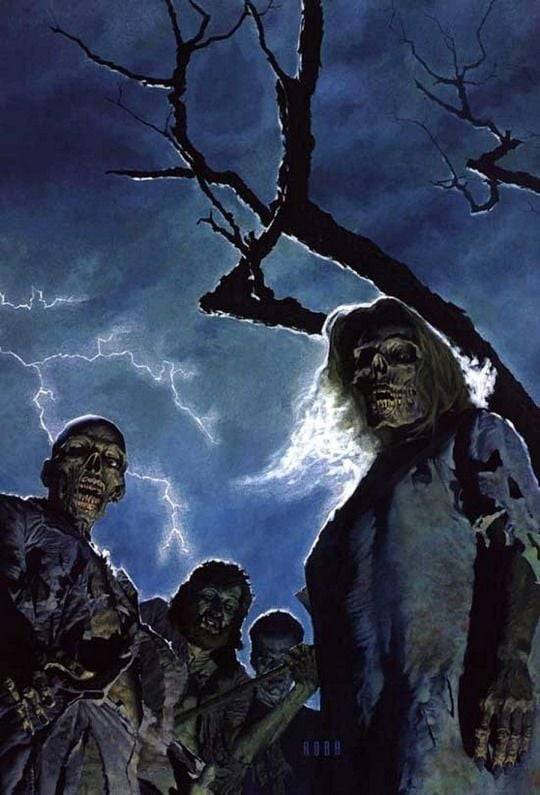
Night of the Walking Dead, Robh Ruppel cover for AD&D 2nd ed Ravenloft module RQ1 by Bill Slavicsek, TSR, 1992
151 notes
·
View notes
Text
Lore: War of Summer's Wrath
Step 0 - behind the scenes
In other settings, elves often differentiate themselves into a small, or large, number of groups - most friendly is distant and seldom communicating with others. In their histories they are often hiding the forgotten roles in the creation, or worsening, of evils in the world: the conflict with 'dark elves' who become twisted reflections of elven society, an animosity between 'high elves' and 'wood elves' as one is more urbanized and magical and the other closer to nature and more physically adept.
In Nerath, I collapsed all these types. The elves here are not at the end of their history and now fading. Instead they are well within the cycle of their civilization - not at its beginnings, and not in its final stages. Elves are also not as divided by 'sub-races', at present there are two, and these are purely revolve one ancestry trait and a minor difference in their appearance most noticeable in their eyes (eladrin have solid, hazy orbs, while 'elves' have more mundane sclerae and irises, the latter albeit in a fantastic range of shades). In the initial creation of the setting, there wasn't any 'elves' at all - just eladrin, but one player really wanted the fantasy of an wood elven ranger. So I needed a reason to explain the difference, which triggered the idea of the ending of summer and the beginning of autumn, which tied up nicely with another idea I had overall "at what cost would you seek to keep/reclaim a lost glory?" and then there was an adventure in Dungeon magazine and in the 4e book Dungeon Delve called 'Summer's End" by Bill Slavicsek and the whole thing took off, writing the campaign past the initial Nentir Vale almost by itself.
Like other sentients, the eladrin were originally created by an astral spirit - a god from the mortal perspective, in this case Ilsundal - the prior god of knowledge, fate, time, and language. Originally they were merely elves, and their first steps were shared between the divine mini-realities in the astral sea and the material plane like other mortals. In their case, this first civilization was led by Tiandra, the first 'elf' created by Ilsundal, and their 'everqueen.'
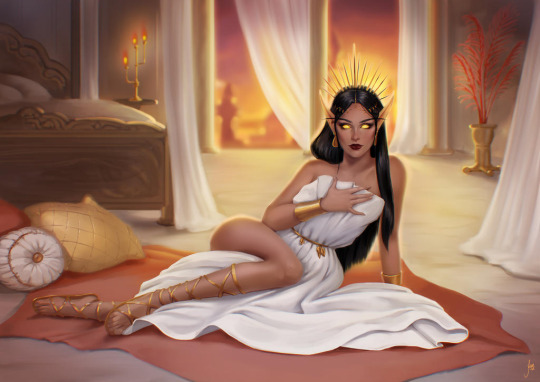
(Credit: 'Yasemine' by June Jensen on DeviantArt; Description: Everqueen Tiandra, the first eladrin, reclining on a blanket in greco-roman-like clothing, with a starburst halo hair accessory)
Spring and Summer of the Eladrin
Ilsundal was a cerebral god, and felt no jealously when Tiandra felt the stirrings of romance with another 'god', Corellon (God of Spring, Beauty, Creative Impulse and Performance). And when Tiandra and Corellon wed, a first for mortals and gods, they found a home in the reflection of the material world, the Feywild. Here, the everqueen forged a bond with the emergent planar spirits - similar to the dark powers of the Shadowfel, or the primal spirits of the Material Plane, to ensure her mortal people could live in perpetual grace.
However, like their Shadowfel counterparts, the spirits of the Feywild do not give boons without cost. This cost would grant the newly renamed 'eladrin' with longevity far beyond any other mortal, with easy path to transition into becoming a being fully of the Feywild. They also enjoyed a deep connection with the plane's ambient magics and glamours. The cost? As creatures of the god of time and knowledge, they would ebb and flow in their own albeit era-long cycles and would need to learn and balance their gifts with their natures.
In this ageless period the eladrin passed from the Spring era of rapid growth, endless energy and drive, their boundless creation, their yearning to experience new things, to their Summer. Summer for the Eladrin was a zenith of their power and authority, virtual total rule over the Feywild, as many of the 'courts' of the fey spirits were ruled by the children of Tiandra and Corellon and even as the Spring God's heart drifted away from Tiandra, she sought the ritual marriage with Pelor, the sun god of summer, fatherhood and inheritor of Ilsundal's domain of time.
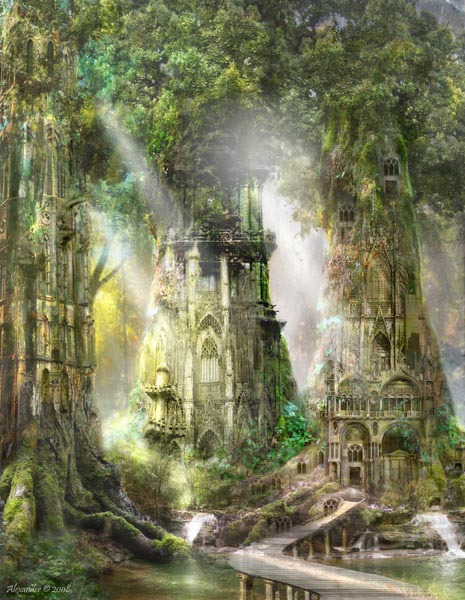
(Credit: Dragon magazine, issue 366, artist Alexander; Description: Eladrin city of Mithrendain in the Feywild)
The following events outlined the final days of that period, when the time of the turning could no longer be ignored, the chill of autumn had started to set in.
The Cusp of Autumn
The first hints of Autumn, the first changes in the colour of trees and the first whispers in the wind, came in the fading of newly born eladrin from their plane's magical gifts. Their eyes looked mortal, they lost the glamour of the Feywild, unable to vanish from mortal eyes and leave the minds of others as if they were lost in a dream. The eladrin first hid these 'defects' but as their numbers grew, they were considered to be the reincarnations possessing some flaw, some lingering spiritual crime and an old word resurface with a new, derogatory meaning, 'elve', imperfect. Most left the largest fey courts, choosing to live among different spirits, or giving up on the Feywild entirely for the Material plane. They were elves. But still, for the Eladrin, this harbinger went unrecognized for what it was - as they had grown lax and had forgotten their origins, and the cost of their gifts, they would need to learn wisdom but it would be a painfully slow and tragic lesson.

(Credit: 'Hello Sister' by Sakimichan on DeviantArt; Description: an eladrin with feymarked eyes threateningly plays with the braids of an 'elve' frozen by panic)
The next and greatest blow was the sudden loss of their longevity. Ageless fully-fey parents and grandparents were now mourning children who had passed at the end of their time in merely a handful of centuries, few barely reaching their second millennium by the Material plane's counting of years. The few elves born in every century or so seemed a minor curiosity - after all they still lived as long as their proper eladrin siblings, but now fully-connected children were ageing and dying not of violence, or of fatigue with living, but simply time - as if they were not the children of Time itself! Suddenly the eladrin feared for their everqueen, Tiandra. One by one over the endless ages had her own half-divine children perished - usually against grave threats: titans, formorian giants of the Feywild, in the depths of the Underdark, melees with great dragons, or the archfiends of the Abyss. Tianadra had but one daughter remaining, Jalendra, who had remained in her mother's court as a knight and general of her Summer Host of graceful knights, bold swordmages, sylvan bowsingers, and daring horizon walkers who traveled the planes of existence as knights-errant.

(Credit: 'Dungeon Magazine issue 157', artist Anne Stokes; Description: Two head and shoulder portraits, both of the same eladrin woman, showing the sudden onset of advancing age as her immortality fades)
Rage, rage against the dying of the light
Jalendra was a tactician, a scholar, a princess without peer, the daughter of Tiandra and Corellon, blessed by her stepfather with his divine gifts. She had was a true servant of her mother's court - respectful of her mother's immortal nature and her unchallenged vision and leadership of their people. Summer's Last Daughter, as the bards now call her, was dutifully married to the most gifted archmage of the Spiral Tower. She was kind, devout, brilliant, passionate, a complete paragon of everything the eladrin believed themselves to be.

(Credit: 'Blood Elf Paladin' by William Vogel on ArtStation; Description: Full-body portrait of Crown Princess Jalendra in mithril and evergold ceremonial plate armor)
And yet, for all her gifts and her accomplishments, she felt fear. She feared for her mother's own health - would she too fade? She feared for her own life - if she faded, there would be no more children of Creation's Greatest Romance, no heirs to the Throne of Stars in the Court of Seasons. She feared for her own children, for her husband, for the lives of all her people. She worried this weakness would be exploited by the Formorians, by those Primordials still vowing revenge against the gods, the enemies of the eladrin. And most of all, she feared this fading as it had no source, no evil spellcaster behind it, and seemingly had no cure. And the fear of those eladrin less privileged to have her great intellect, her wisdom, her magics, wore on her. Together their fear grew, and in trying to deal with it like they had dealt with all other problems, they invented a cause, and a solution this curse as they had come to name it.
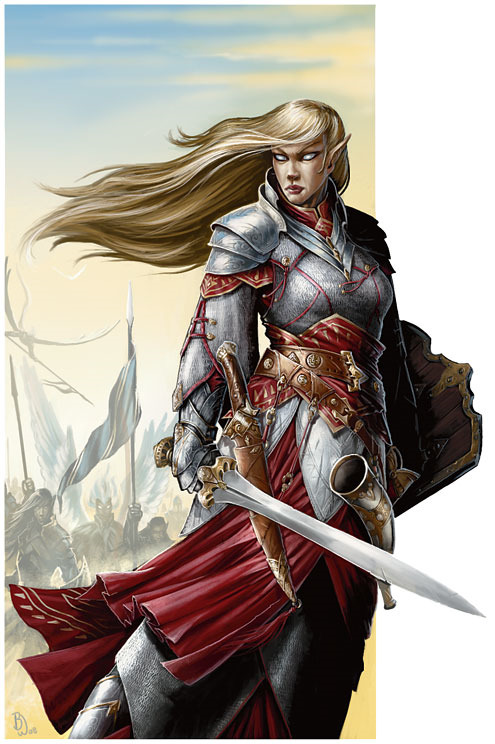
(Credit: 'Eladrin General', illustration by Ben Wootzen; Description: Everqueen Jalendra of the Summer Host in her campaign armor)
Early in her life, Jalendra's older sister had married the barbarian king Magroth, whose armies had emerged as the founders of the human empire of Nerath. And while Magroth was a tyrant and abusive, her sister saw in one of his warlords all the qualities she had been told would be in Magroth. The two began a tryst, and with Magroth's advisor, the prophet-mystic Nera, they prevented the king's murderous rage at the infidelity before it consumed the opportunity for humans to live in peace for the first time since the fall of Bael Turath. And Jalendra's sister sacrificed her immortality to fade with her truest love - who was the first true ruler of the Nerath in terms of its legacy to history. Jalendra, all these centuries later, could not conceive of such a sacrifice. Her sister could have easily survived her mortal husband and returned to the Feywild, or even remained within the human empire, helping as an advisor and history-keeper if she wasn't inclined to rule as a widow-empress. But since that first marriage, the eladrin and the humans had been close allies, closer than the eladrin were with any other civilization in the Material plane. There were many such mortal-fey marriages, the stuff of epics among both peoples. But the humans were also the ones cursed with the Doom of Man - that they would forever be marked by the crimes of Bael Turath. Was this fading of eladrin life be a by-product of that curse levied by all the old gods on the humans? Had helping them defy human's self-destructive ambitious impulses invoked the ire of these very gods? And if Nerath had been the seed of this curse, and its fall to the violence of the literal host of demons and mortal raiders, a literal Doom of Man, been the trigger for the fading of the eladrin, what would be the act of atonement necessary to save the children of Ilsundal?
So it came that fear grew into a terrible delusion - for the eladrin to atone for saving humans from themselves, they would need to end humans. The believers in this theory 'knew' they needed to correct their prior interference in the divine curse. And with the legacy of Nerath's long peace scattered throughout the Material plane, that correction would also need to be great in scope. And they felt an urgency - who knew for how long the eladrin had before the fading drained them of all their strength, or their enemies grew bold enough to strike in their most vulnerable time.
Jalendra went to her mother for her blessing to command the Summer Host to action - to cleanse the eladrin of their human 'taint' and restore their glory. Tiandra was horrified at her daughter's words, and the depths to which she and her followers had convinced themselves of this terrible necessity - that such an unspeakable evil must be done to erase what they had previously held as a great act of goodness. Tiandra refused to give her approval - Jalendra could not understand, and in that moment, she feared the fading had already stolen her mother's strength of authority, her purpose, her will to see what must be done. And so Jalendra struck her mother with her fury, left her senseless on the floor, claimed her mother's crown and launched the crusade. The War of Summer's Rage had begun with an attempted kin-slaying and the usurpation of a mother's throne by her last living daughter.
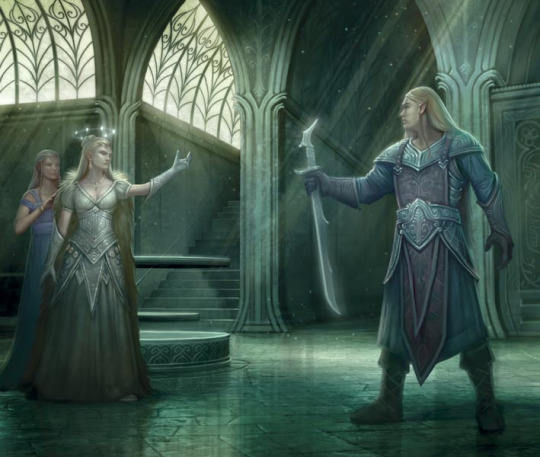
(Credit: untitled by William O'Connor; Description: Queen Tiandra with the Crown of Stars and handmaid reaching for an eladrin knight's sword)
The Year of Summer's Wrath
The War of Summer's Wrath, or the Summer War as it is commonly known, lasted less than a full year as the Material world measured such things but the change it wrought will take centuries to fully calculate and understand. The shortest way to explain it was in the darkest hour for the humans of the northern lands of the Material world, less than a century after the collapse of the Nerathi Empire. Legions of ageless, peerless warriors, armed with the most powerful magics and arms, emerged from great planar portals and began to erase every city, every farmstead, every shadow that proved humans had ever existed, a scouring unthinkable since the gods themselves burned and buried Bael Turath beneath the Bloodsands - made all the more horrifying because it was done at the hands of those humans had felt were the strongest allies.
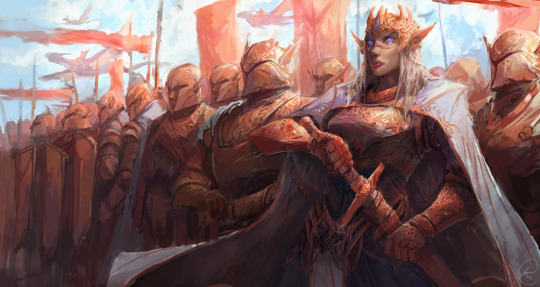
(Credit: 'Elven Army' by JasonTN on DeviantArt; Description: mass ranks of elven armored knights with unhelmed, crowned female elven commander in foreground)
The first attacks were devastating, but struck at the edges of Nerath. When the shock of the assaults faded, it became clear that the Host was seeking to drive humans together into one area, likely in the hope to destroy them in one final act. The fragmented survivors of Nerath's collapse quickly found each other and started coordinating a defensive strategy - heroes also sought out allies across the planes and across the Material world. And in the footsteps of these heroes, the Summer Host followed, threatening any who would protect humans, which slid into the arrogance of threatening the destruction of any who questioned the rightness of the Summer Host's cause, or challenged the authority of the eladrin to be the executioners of humanity. Pride and delusional 'burden' became hubris and arrogance.

(Credit: 'Lady Liadrin' by Eva Widermann; Description: Summer Host knight in full wrath standing before a human victim, shield and sword at the ready)
In the end, Tiandra had survived her daughter's blind rage, and in recovering, realized this was the cost the Feywild had placed on them - this evil, this blindness, this fear, was all their own, her own, fault. They were the symptoms of the unwillingness to learn wisdom and to balance their gifts with their responsibilities. They are thought themselves immune to the cycle of time, even as they called their civilization the Court of Seasons, their era the Age of Eternal Summer. They had lost sight that for summer to exist, their would need to be autumn and winter, and spring. They feared losing a thing that was not a true part of who they are, of who they were and had always been.
Lore coda: Gazing into the crystal ball
So, as can be seen I've started planting the seeds for a sort of "evil elf" faction - eladrin refusing to give in to the shifting of the seasons, clinging to the hope that they can be purged of their ageing and bitter that their peers were so willing to "give up" and "make peace" - "betraying" Jalendra and her crusade. Their belief in how they 'became' mortal falls by the wayside under the weight of more immediate grievances - real and perceived, which then justify and reinforce those original fears that led them to horrible acts of evil. For the moment they are quite small in number and living within the Autumn Court society, still supported by well-intentioned beings hoping that time will allow them to process their grief, but their numbers include those of extreme power, and count on swaying those younger eladrin who seek that immortality that was promised to them and is now denied.
And as any player could imagine, their willingness to wrap their evil and delusion in a sense of false righteousness exposes them to all sorts of possible "allies" - unscrupulous archfey spirits of the Feywild, fiends, undead, the intelligences of the Far Realm or even astral gods, all of these beings willing to use them as pawns or distractions in personal plots.

(Credit: 'Aalith, Caller of the Benighted' by Thérèse Lanz on ArtStation; Description: Eladrin emerges from a portal and unleashes an army of kaorti of the Far Realm, ready to continue her fallen queen's crusade under a new banner)
2 notes
·
View notes
Text
Star Wars: Thrawn Trilogy Sourcebook-1996
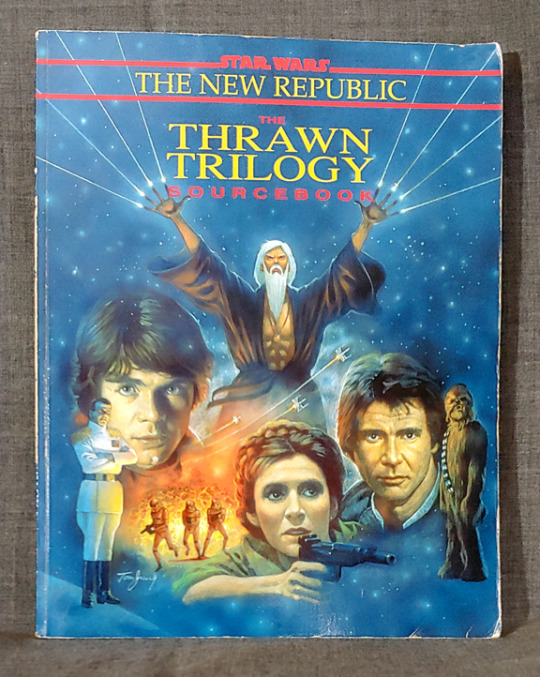
FOR SALE! FIND THIS ITEM & MORE AT screaming-greek.com or check out the link in my bio.
Star Wars - The New Republic: Thrawn Trilogy Sourcebook by Bill Slavicsek & Eric S. Trautmann - Star Wars Roleplaying Game - First Edition - Soft Cover - Pre-Owned - 248 Pages - West End Games - 1996
What you see is what you get! So, please take the time to check out the pics in the item gallery. Feel free to contact me if you have any questions, offers or comments: [email protected]
Read the full article
0 notes
Photo
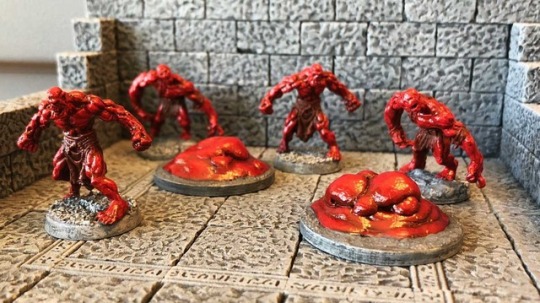
Blood zombies and blood oozes: Blood zombies are coated with a constant flow of fresh liquid blood. Blood oozes crave more of the blood from which they are formed. (Reaper metal and Bones ghasts, scratch-made oozes; both monsters are found in the 5e D&D adventure Blood Vaults of Sister Alkava by Bill Slavicsek and are reprinted in the new Creature Codex by Kobold Press)
#D&D#Dungeons & Dragons#zombie#ooze#zombies#blood zombie#blood ooze#D&D miniatures#Reaper Bones#miniatures#fantasy miniatures#dnd#Dungeons and Dragons#Kobold Press#Bill Slavicsek#Creature Codex#Blood Vaults of Sister Alkava#undead#blood#monster
13 notes
·
View notes
Photo

New Article posted on FanthaTracks.com https://www.fanthatracks.com/reviews/literature-reviews/book-review-defining-a-galaxy-celebrating-30-years-of-roleplaying-in-a-galaxy-far-far-away/
Book Review: Defining a Galaxy: Celebrating 30 Years of Roleplaying in a Galaxy Far, Far Away
Defining a Galaxy: Celebrating 30 Years of Roleplaying in a Galaxy Far, Far Away It Was a Dark Time for the Galaxy In the late 1980s, Star Wars was becoming a fading memory. The movie trilogy had concluded. The comic books and novels were winding down. The action figures had run their
Take The Link To Read The Full Article
0 notes
Text

Up and away to Cloud City, in search of the "Sleeping Dragon" (Peter Clarke cover for Dungeon 48, July/August 1994, featuring the silver dragon player character Agoron Cloudwalker and his elf kindred Larala Firstleaf, from Bill Slavicsek's AD&D adventure for his own Council of Wyrms setting)
#D&D#Dungeons & Dragons#Peter Clarke#dragon#Dungeon magazine#Council of Wyrms#Bill Slavicsek#silver dragon#dragon rider#mountains#aerial encounter#Sleeping Dragon#1990s#D&D 2e#AD&D 2e#dnd#Dungeons and Dragons
104 notes
·
View notes
Text
Peace talks aren't the only political aspect to the High Isle Chapter, though. The Ascendant Order, led by the Ascendant Lord, is one group that stands to benefit from the ongoing hostilities during the Interregnum. As such, they serve as the main antagonists in the High Isle storyline. According to Slavicsek, the Ascendant Order has "what they consider to be a noble purpose... it's just a matter of how you interpret what they're doing." Leamon Tuttle went on to describe the Ascendant Order as "a pan-Tamrielic movement", not a group restricted just to High Isle.
"Because it's Breton-influenced, they liken themselves to a Knightly Order, though most of the other Orders think of them as a rogue order," Slavicsek said. "They don't reveal their identities, they wear their helmets all the time, and in some ways, they act like terrorists as they try to go about achieving their goals. They have what they consider to be a noble purpose... it's just a matter of how you interpret what they're doing and the fallout it causes."
Any theories so far on the goals of the Ascendant Order?
I find it interesting they're painted as being against monarchies and thrones in some posts but also benefit from the three banners war, specifically referring to it in this post as the Interregnum. I like the idea of their name being the Ascendant Order and their benefitting from no emperor to imply some connection between the dragonfires not being lit and mankind being able to Ascend in some way. That the reason they're the villains is because they need war to be happening for there to be no emperor and advance their goals. I think it's a lot better than just "anti monarchy people are bad guys"
Perhaps a rogue Akatosh cult to tie into the event rewards this year being Akatosh themed (the golden dragon pet and skin are all we know of so far but 👀)
#high isle#ascendant order#m speaks#legacy of the bretons#lotb#eso#elder scrolls online#tes#the elder scrolls
66 notes
·
View notes
Text
Skill Challenges...
An audience with the duke, a mysterious set of sigils in a hidden chamber, finding your way through the Forest of Neverlight—all of these present challenges that test both the characters and the people who play them. The difference between a combat challenge and a skill challenge isn’t the presence or absence of physical risk, nor the presence or absence of attack rolls and damage rolls and power use. The difference is in how the encounter treats PC actions.
Skill challenges can account for all the action in a particular encounter, or they can be used as part of a combat encounter to add variety and a sense of urgency to the proceedings.
- Bill Slavicsek
The Basics: What is a Skill Challenge?
To deal with a skill challenge, the player characters make skill checks to accumulate a number of successful skill uses before they rack up too many failures and end the encounter.
Example: The PCs seek a temple in dense jungle. Achieving six successes means they find their way. Accruing three failures before achieving the successes, however, indicates that they get themselves hopelessly lost in a wilderness full of disease, bugs, and deadly predators...
When should I use a Skill Challenge?
It’s not a skill challenge every time you call for a skill check. When an obstacle takes only one roll to resolve, it’s not a challenge.
One Persuasion check to haggle with the Merchant, one Athletics check to climb out of the pit trap, one Arcana check to figure out what magical tome contains the information you need — none of these constitutes a skill challenge...
The Consequences...
Skill challenges have consequences, positive and negative, just as combat encounters do.
When the characters overcome a skill challenge, they earn the same rewards as when they slay monsters in combat — experience and maybe some treasure.
The consequences of total defeat are often obvious: no XP, no treasure you get it...
Success or failure in a skill challenge also influences the course of the adventure — the characters locate the temple and begin infiltrating it, or they get lost and must seek help.
In either case, however, the adventure continues...
With success, this is no problem, but don’t fall into the trap of making progress dependent on success in a skill challenge.
Failure introduces complications rather than just ending the adventure. If the characters get lost in the jungle, that leads to further challenges, not the end of the adventure.
My Thoughts...
Skill Challenges, or Extended Tests as I think they were called, was a Mechanic from 4th Edition, probably one of the very few that some DMs still use in 5th Edition as a sort of House Rule.
I myself use it many times, such as when the Players had to bargain with a Devil and try not to get tricked, using Persuasion, Performance, Deception, Insight and even Intimidation, the Barbarian trying to intimidate the Devil into agreeing to their terms.
At one point the Bard even used Legend Lore and made a History Check, making a remark to the Devil about its past.
And this test was a “Moderately Hard”, needing a lot of successes to not be tricked into a deal they don’t want with a Devil they don’t like.
Failure in the Skill Challenge could’ve meant many things: Maybe they did complete the deal, but they didn’t read the fine print. Or maybe the deal was off and they gained the anger of a Devil.
But luckily, they managed to just barely succeed, gaining some reasonable assistance and managing to save a few hundred gold pieces on the deal...
Overall, I think Skill Challenges can be fun, but don’t overuse them...
57 notes
·
View notes
Photo

In light of modern technology with Siri have you reevaluated your pronunciation of “Cyre” over the last 15 years? There’s no one right way to pronounce Cyre. I picked up “SEER-ee” from Bill @slavicsek, but I am probably switching to “SEER” so my phone will stop freaking out. It’s possible the Mourning happened when Aureon said “Hey, Cyre” and his iPhone got confused. — Keith Baker (@HellcowKeith) January 30, 2020
2 notes
·
View notes
Text

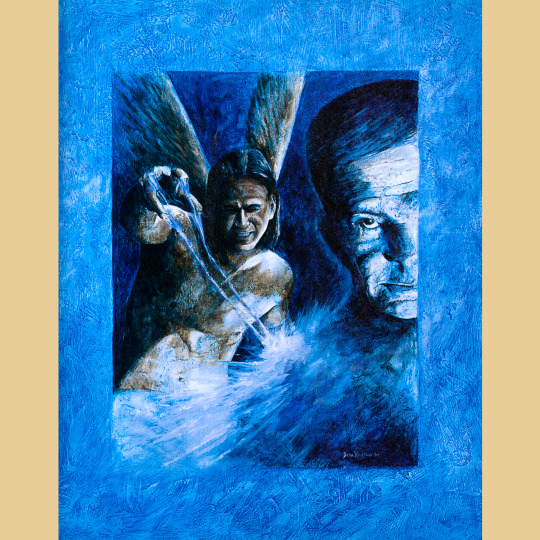
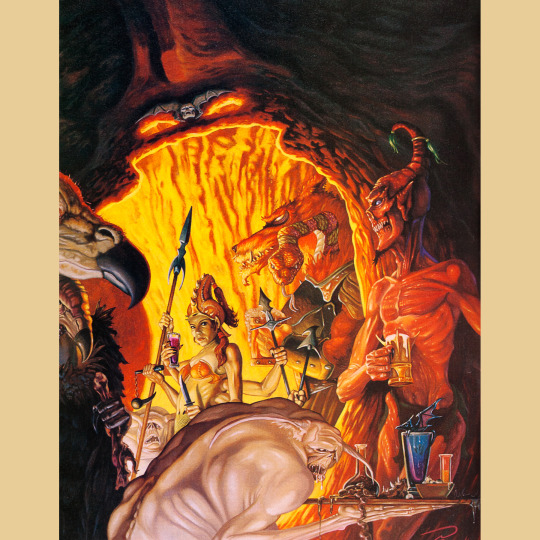
Deva Spark (1994) is the only Planescape adventure module I haven’t covered, because when I was doing the Planescape adventures, I skipped it because I didn’t really like it. I’ve softened on that somewhat, but it is still my least favorite of the modules, which is ironic since it is co-written by Bill Slavicsek and he wrote Harbinger House, which is probably my favorite of the bunch?
So, there’s this angel, who hides their divine spark so they can go on a stealth mission in the abyss. They accidentally hide it in the soul of a chaotic evil mortal, who dies and also winds up in the abyss, where he is killed (er, his soul, I guess, is more-killed) by a demon, who inadvertently gets that spark of goodness inside. The adventure is an event-crawl in the ‘90s mode, where players must save the angel, get to the bottom of the demon’s bizarre behavior and sort out everything in a moment of final decision-making that parallels the choice systems that would emerge in videogame RPGs in the 21st century. Heal the angel, heal the demon, heal both a little, heal neither or fuse them into something new. There is one option here that is pretty clearly flagged as the “correct” one (something new) but the adventure gives little guidance on what that new thing is or what the consequences of its unique existence might be. Frustrating.
Despite this, and the rigidity of the event-crawl, the plot is satisfyingly Planescape-y. You get a real sense of a vast cosmic order that is both inexorable and infinitely changeable, and it is nice to have the players directly have a hand in some of that change, even if the path to get there is clearly marked out.
68 notes
·
View notes
Photo


Illustration by Jon Foster. “The Dark Side Sourcebook.” August, 2001.
In 2001, Wizards of the Coast released “The Dark Side Sourcebook,” a roleplaying supplement that explored all things evil in the Star Wars galaxy. Written by Bill Slavicsek and J.D. Wiker, the sourcebook outlines rules for roleplaying dark side characters, information on dark side equipment and traditions. Mara Jade as the Emperor's Hand was featured on the cover along with Sith lords Darth Vader and Darth Maul, as illustrated by Jon Foster. Foster had these memories to share on the StarWars.com website:
"The front cover was a tough one for me," reveals Foster, "because I never really got great joy out of doing montages - I don't think I'm particularly well suited to it, anyway. I tried to make this montage not be floating heads and different elements. I tried to have a little bit of a figure and ground sensibility."
Filling out the space behind the front cover's dark triumvirate are remnants of some sort of structure. "I've always been interested in an organic sense of architecture," notes Foster. "I wanted to put a little bit of desolation in it. A recurring theme in a lot of my work is the rib patterning. I find it interesting, compositionally, to have things that create a rhythm or a pattern. The structures on either side of the characters have a rhythm that helps keep you back in the painting."
The Dark Side painting was created in oil on 13.5” x 12” board, and enhanced digitally.
#Mara Jade#Mara Jade Skywalker#Emperor's Hand#Star Wars#Star Wars EU#Star Wars Expanded Universe#Star Wars RPG#Star Wars art#Star Wars Legends#Darth Vader#Darth Maul#Anakin Skywalker#Sith#Dark Side#Bill Slavicsek#J.D. Wiker#Wizards of the Coast#Emperor Palpatine
15 notes
·
View notes